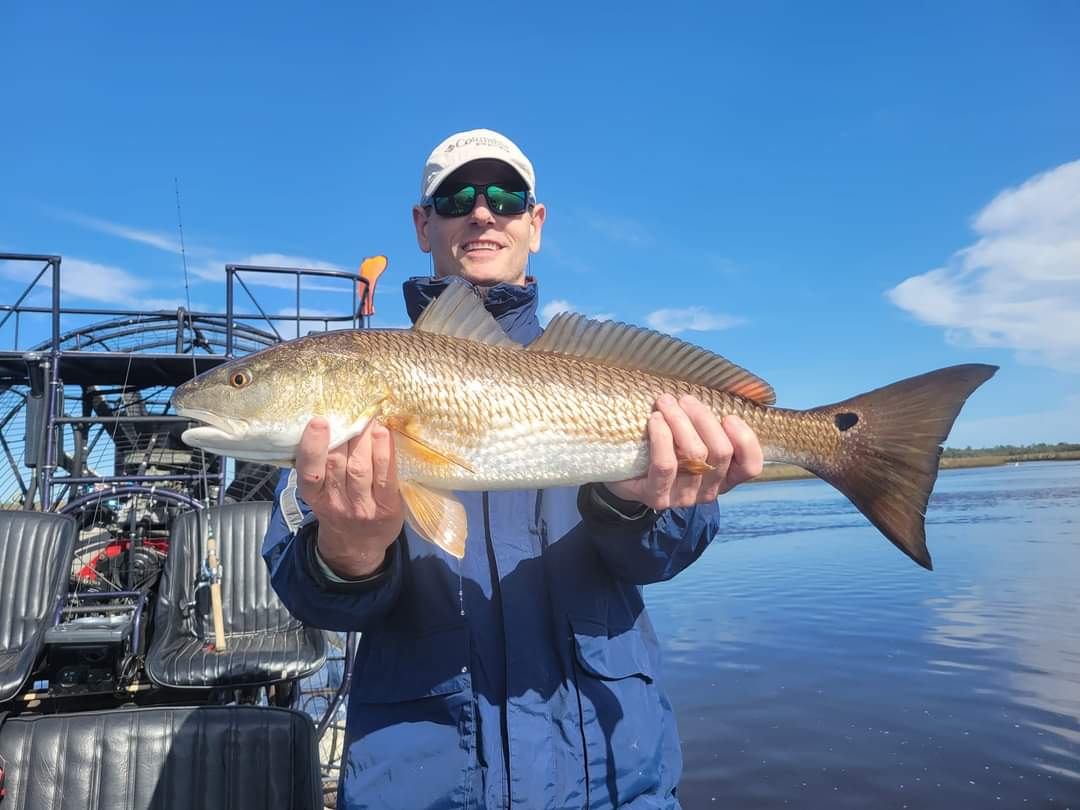Inshore fishing has always been the Sunshine State’s counterpoint to offshore adventure. Instead of chasing tuna or sailfish miles from land, on the flats, you’re sight-casting in knee-deep water, reading subtle color shifts and ripples, hunting individual fish that might be just thirty-or-so feet away.
What makes Florida stand out for this kind of fishing is how every stretch of coast feels different. The western shallows, running from Cedar Key up through Econfina and into Apalachee Bay, still fish like the old days. Half wild country, half frontier. These are not your standard resort towns built around nightlife, they’re places where tide charts are more relevant than traffic lights—and that’s exactly what makes inshore fishing charters in North Florida so good.
Field Notes: Finding Productive Inshore Water
- Depth Gradient: 1–3 feet with visible bottom contour is ideal for redfish and trout.
- Bottom Composition: Look for mixed grass and sand—too much mud reduces visibility, too much sand limits forage.
- Current Flow: Subtle tidal movement creates feeding lanes along edges and potholes.
- Structure Density: Isolated oyster bars or grass points tend to outperform continuous shorelines.
- Salinity: Optimal range 20–30 ppt; dropping salinity from heavy rainfall pushes fish toward bay mouths.
North Florida fishing guides use a simple formula: clean water, active tide, and visible bottom equals fishable conditions.
That mix of depth, flow, and structure is exactly what defines this stretch of coast—and why the Big Bend region between the Panhandle and the Nature Coast has quietly become one of Florida’s “best-kept secret” fishing destinations. Unlike the heavily-developed stretches around Tampa or Destin, this area is largely protected—its marshes, tidal creeks, and estuaries stretching for miles without a condo or seawall in sight.
Redfish tail in the grass, spotted seatrout lurk over sandy potholes, and black drum cruise the edges of oyster bars. In the deeper cuts and channels, cobia and tarpon slide through with the changing tides. The air carries the brackish scent of tidal marshes, and the sounds are mostly natural—spoonbills, mullet splashing, and the soft churn of propwash fading into stillness.
Econfina River Fishing
The Econfina River area in particular is something of a local legend. It cuts through one of the most unspoiled coastal systems in the state, feeding into a bay with textbook inshore structure. The flats here are broad, shallow, and consistent—perfect for sight-fishing redfish and trout almost year-round. In late spring, cobia move across these same waters, and during high summer, tarpon show up near the river mouths.
Between Keaton Beach and St. Marks, a handful of small coastal towns anchor a stretch of water that’s as productive as it is overlooked. Steinhatchee gets most of the name recognition, but the real draw lies just beyond it—where the grass flats widen, the creeks twist deeper inland, and the fishing pressure all but disappears.
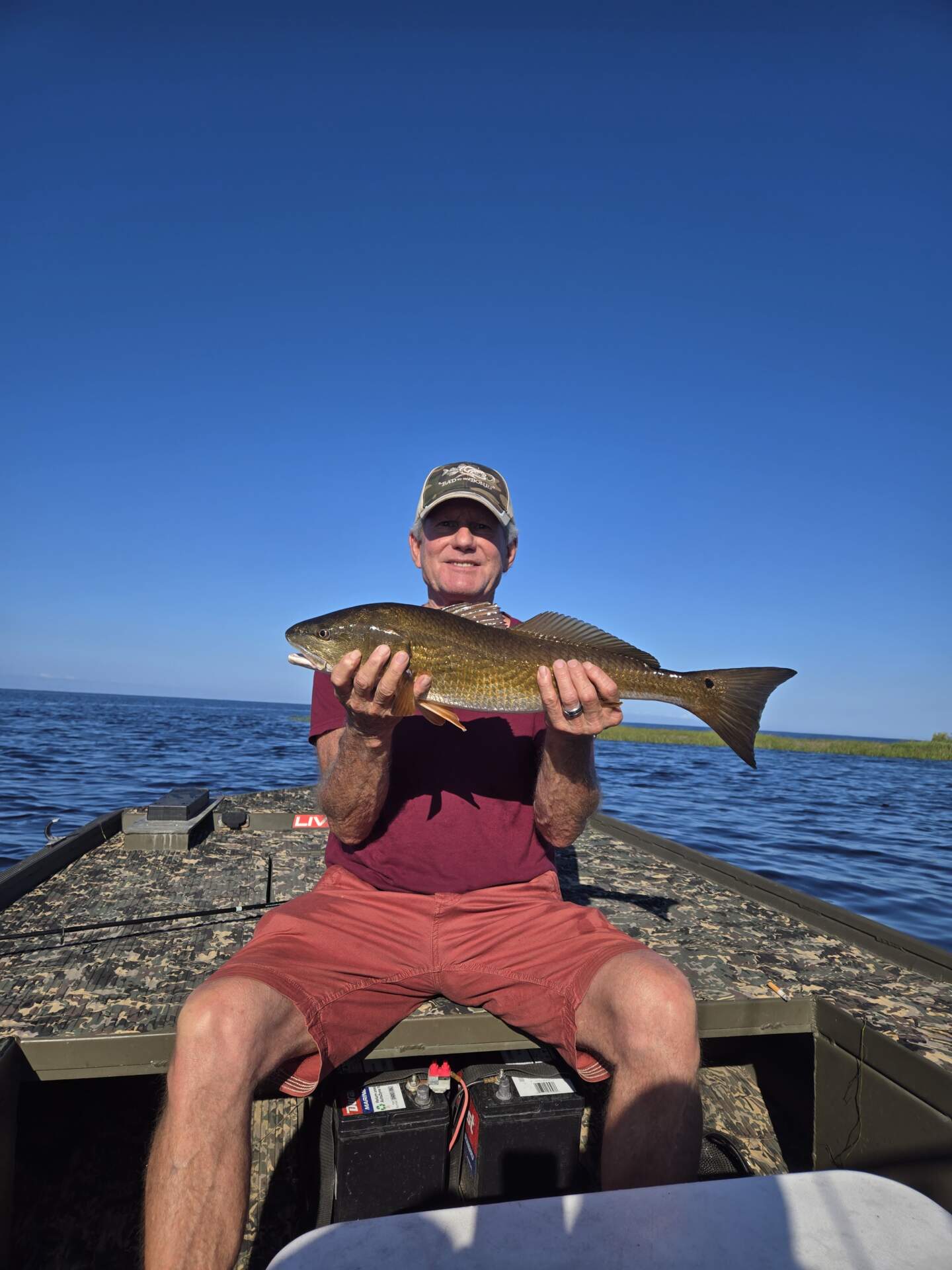
In this part of the state, you can fish all morning, come back through winding creeks framed by live oaks and palmettos, and feel like you’ve traveled decades back in time. Here it’s more bait shops than boutiques, more skiffs than jet skis. It’s the Florida where you still launch from a dirt ramp, idle past ospreys instead of condos, and can run less than ten minutes to find fish that haven’t seen a lure in days.
Florida’s Inshore Ecosystems
Along Florida’s Gulf Coast, you have tidal creeks, grass flats, oyster bars, and mud-bottomed bays. Inshore fishing here is all about reading the system—knowing how salinity, tide, and structure interact. Each of these types of water fishes differently, and the best resorts are positioned to give guests access to several of these zones within a short run.
Quick Reference: Ideal Inshore Conditions
- Water Depth: 1–4 feet for sight-fishing; up to 8 feet for drift or jig presentations.
- Salinity Range: 15–30 ppt supports most redfish, trout, and drum activity.
- Water Temperature: 68–82°F is optimal for consistent feeding.
- Bottom Type: Mix of sand, grass, and shell—hard enough to pole, soft enough to hold bait.
- Tide Movement: Moderate flow (6–12 inches of rise/fall per hour) keeps bait active without muddying the flat.
Rule of thumb: if the water’s moving and the bottom’s visible, the fish are likely in it.
Grass Flats
These are the heart of Florida’s inshore fishery. Healthy seagrass beds filter the water, hold shrimp and pinfish, and provide cover for spotted seatrout and redfish. Grass density changes with salinity—thicker toward the open Gulf, thinner upriver where freshwater mixes in. Along the upper reaches of Apalachee Bay, the flats stay remarkably consistent—wide, clear, and lightly pressured.
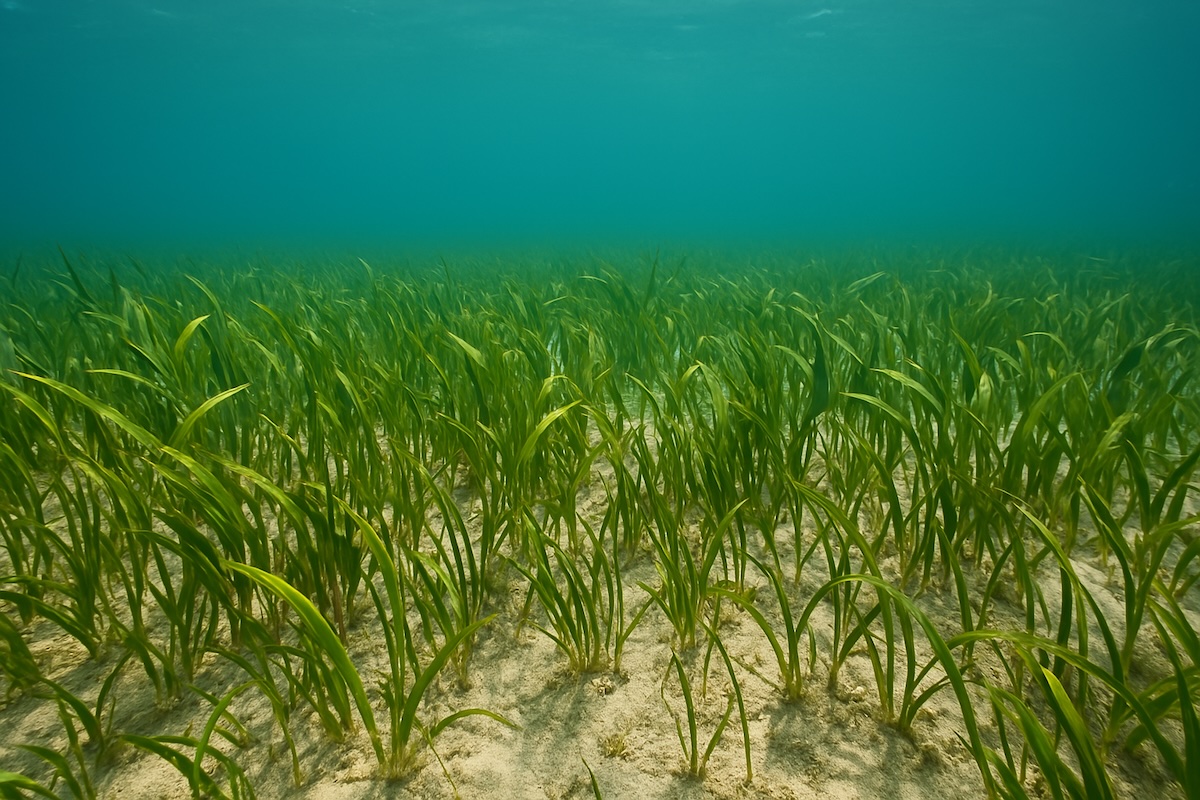
Fishing resorts and lodges near estuary mouths may have the best of both worlds: salty enough for trout, but close enough to brackish zones for drum and sheepshead. These same grass flats also support Florida’s scalloping grounds in midsummer, when the season draws families and fishermen to the shallow clear water to gather bay scallops by hand or snorkel.
Creeks and Back Bays
As you move inland, the creeks narrow, and the fishing shifts from sight-casting to ambush-style. Here, oyster bars and undercut banks create ambush points where redfish and snook wait for the tide to push bait through. Water temperature stability in these zones also makes them important year-round refuges, especially during cold fronts in late winter.
Oyster Bars
Oyster structure defines much of the Big Bend’s productivity. Bars and shell mounds create breaks in current and attract everything from black drum to juvenile grouper. These areas are best targeted on mid-tides when fish move up to feed without being completely exposed.
Resorts with easy skiff access to these shallow shelves usually attract more advanced fishermen who prefer poling and precision casting. In some of the most remote marsh systems, airboat fishing charters can reach narrow backwaters and ponds that go dry at low tide—spots few skiffs can access, but where undisturbed fish often feed aggressively once the engine cuts off.
Marsh Edges and Tidal Creeks
Marsh shorelines—especially the ones with small feeder creeks—become hunting grounds for redfish when tides flood high enough to let them nose into the spartina. Knowing exactly when those tides align with daylight and wind direction is what separates an average day from a legendary one.
Planning Around Florida’s Tides and Weather
Inshore fishing lives and dies by the tide cycle. Most of Florida’s Gulf side experiences moderate tides—usually 2 to 4 feet of movement per cycle—but local variations are dramatic. The coast along the Big Bend, for instance, has subtle gradients that change water movement dramatically within just a few miles.
Tide Tips
- Mid-incoming and early outgoing tides: generally prime for redfish.
- Wind direction: can amplify or suppress tide height; an east wind can hold water inshore longer.
- Slack periods: avoid completely still water when bait stops moving—predators follow the current.
Productive flats depend on movement—no current usually means no bite.
Weather adds another variable. Winter cold fronts clear the water and condense bait schools, creating phenomenal sight-fishing conditions for experienced fly or lure fishermen. Summer brings stable warmth and heavy grass growth, making topwater fishing explosive during morning tides.
The Inshore Experience
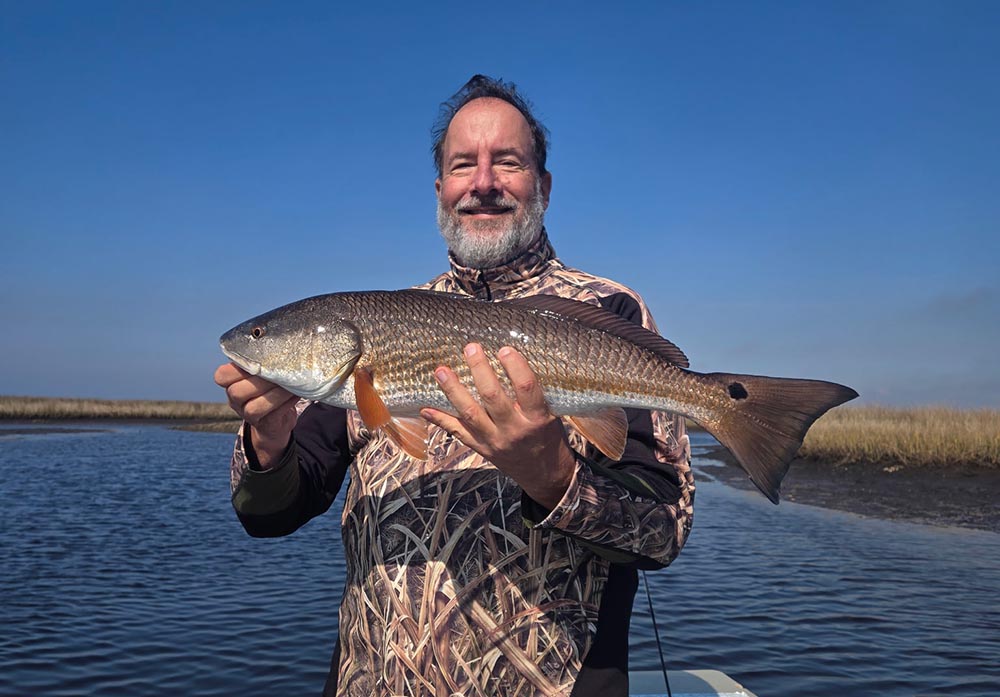
The best fishing resorts in Florida bridge the gap between backcountry adventure and comfort. They’re not just hotels with a dock—they’re ecosystems designed for fishermen. Guides who grew up on the water, shallow-draft boats that can nose into barely a foot of depth, and private access to tidal creeks you won’t find on a map.
A good inshore lodge doesn’t overwhelm you with modernity—it stays out of the way. The focus is the water. Mornings start early, often with coffee under a screened porch while the sky turns from gray to gold. The boats idle out in a line toward the mouth of a creek, and by the time the sun clears the treeline, you’re watching your first redfish tail through the grass.
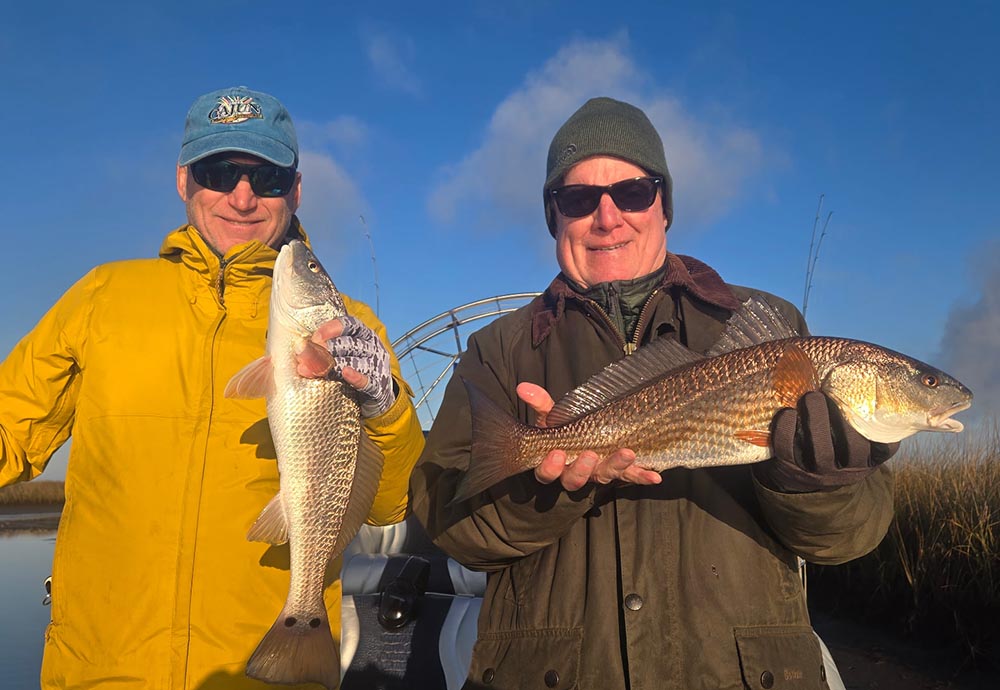
For visiting fishermen from out of state, this kind of trip rewrites what a “Florida fishing adventure” can be. Here, inshore fishing charters aren’t centered around crowds or chaos. You see every cast, every swirl, every flash of copper in the sunlight.
And when you return to the dock, you’re not rushing to beat traffic or make dinner reservations—you’re just rinsing off the gear and watching the tide roll back in.
What Makes Inshore Fishing So Addictive
To understand the appeal of inshore fishing, you have to slow down. Every ripple tells you something—wind, current, bait, pressure changes. In a world where so much fishing has become about running and gunning, there’s a meditative quality to poling silently across a flat, scanning for movement.
In Florida’s Gulf shallows, visibility is everything. Clear water over grass flats gives you a window into the ecosystem itself. You’ll see pinfish darting across turtle grass, crabs drifting in the tide, and that sudden heart-stopping moment when a shadow detaches from the bottom and turns toward your lure.
Even on tough days, inshore fishing rewards awareness. The smallest adjustment—switching from a topwater to a jig, or casting five feet farther ahead—can change everything.
Where Inshore Meets Offshore
Even at resorts that specialize in flats and backcountry fishing, the line between inshore and offshore isn’t always fixed. Florida’s Gulf Coast, especially around the Big Bend and Panhandle, has a gradual shelf—meaning you can run miles before hitting deep water. That geography makes it possible for fishermen to experience both worlds without changing lodges.
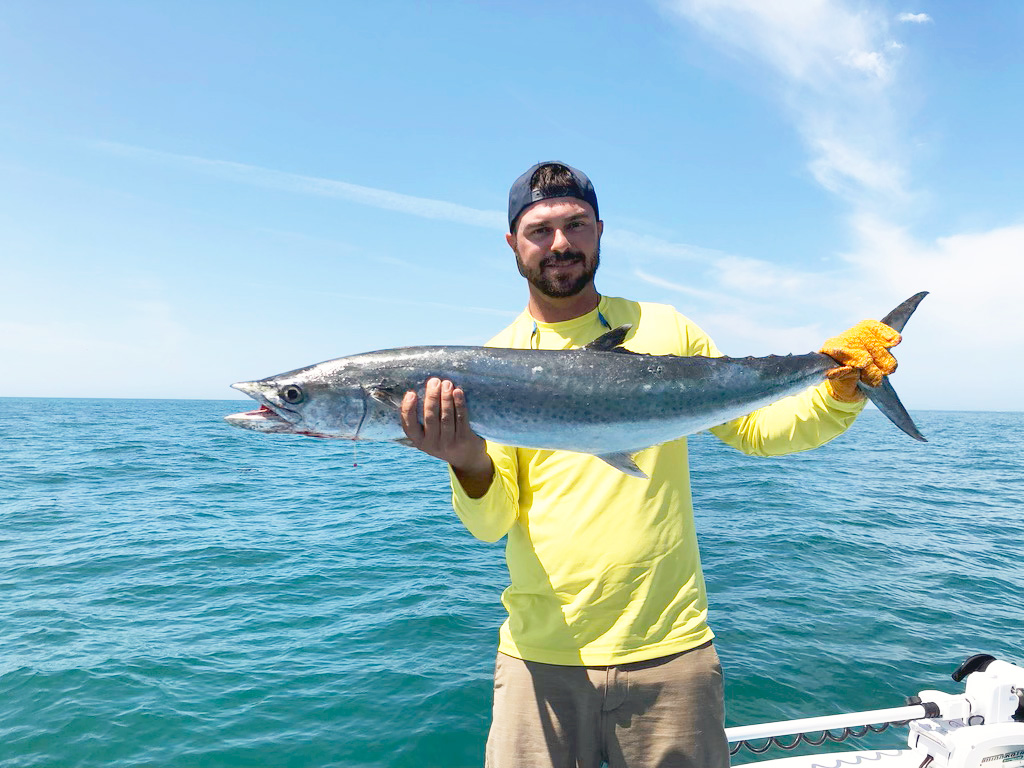
Inshore, the grass flats and marshes dominate. Just a few miles out, patch reefs, nearshore wrecks, and limestone ledges start appearing. These zones bridge the gap between redfish country and bluewater. Cobia, kingfish, Spanish mackerel, and even grouper often move close enough inshore to target from the same base of operations used for flats fishing.
If you’re staying at a coastal fishing resort, a two-part trip is the sweet spot: early mornings stalking redfish in ankle-deep water, then a midmorning run to nearshore structure once the sun gets high. On the right day, you might cast to tailing reds at sunrise and jig for snapper before lunch—all without ever losing sight of land.
That overlap is why so many inshore-focused resorts keep one or two larger bay boats or nearshore rigs in their fleet. It’s not always about going offshore in the deep-sea sense, sometimes it’s just about expanding your range when the tide slows or the weather allows. In late spring through early fall, that flexibility gets especially valuable, with the migratory pelagic species pushing closer to shore.
Airboats and the Shallow Frontier
Few things capture the old-Florida feel quite like an airboat ride through the marsh. While they’re often associated with sightseeing and the Everglades, in certain parts of the Big Bend (including around Steinhatchee and Lamont), airboats play a big part in fishing access. The fact that you can skim across inches of water opens routes traditional skiffs can’t reach, especially during extreme low tides, or the drought periods when creeks and back ponds go bone-dry at the mouth.
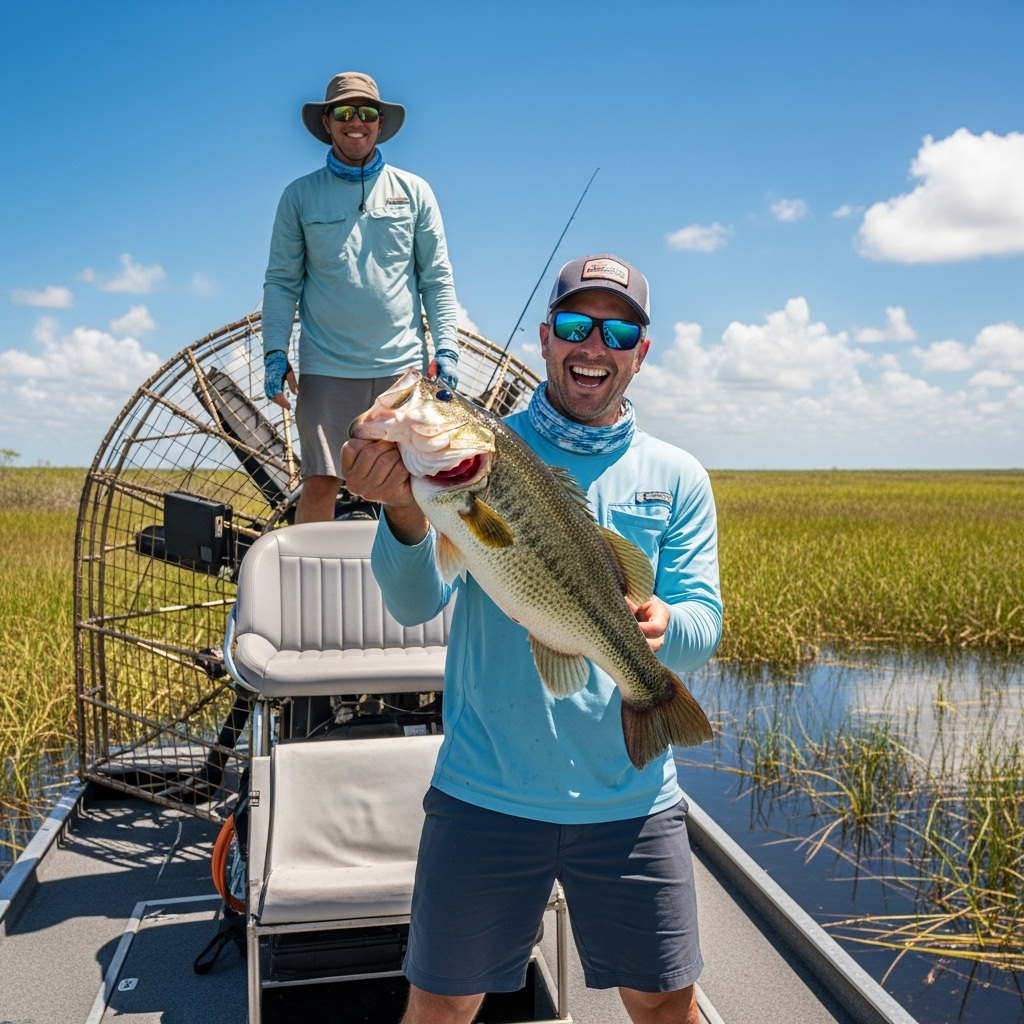
Airboat fishing isn’t common everywhere, but when a resort offers it, it adds an entirely different dimension. These runs can reach remote redfish and black drum spots that see almost no pressure, where fish feed aggressively simply because they’re unbothered. (The famous noise of the airboat is temporary—once it’s shut down and you’re drifting in the stillness of the marsh, the payoff is solitude.)
For visiting fishermen from out of state, the experience also doubles as a crash course in Florida’s ecology. You’ll see how the freshwater flow from inland rivers blends into salt marshes, shaping the same estuaries that sustain the inshore fishery. Airboat fishing trips give you a rare perspective of the layout of the flats, and how the channels braid through the grass.
Old Florida Still Lives Here
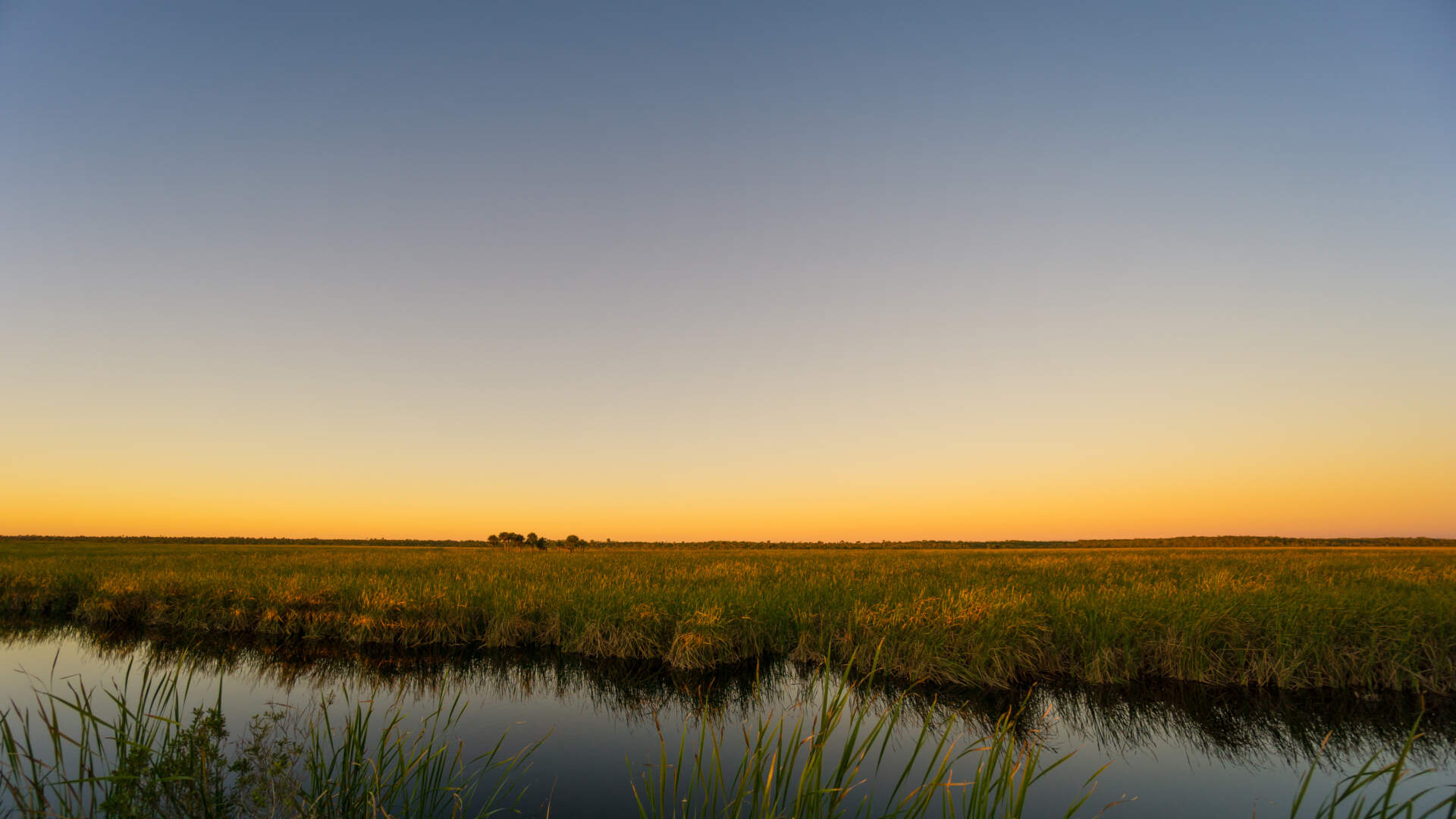
For anyone who thinks they’ve seen all of Florida, the Big Bend offers a quiet rebuttal. Here, “fishing resort” doesn’t mean towers or tiki bars—it means a home base surrounded by nature, where the night sky still shows every star and the only sound after dark is a distant splash in the shallows.
In many ways, fishing lodges like Econfina Sporting Club are preserving access. They keep alive a form of fishing that depends on healthy grass beds, tidal flow, and patience. The fishermen who stay there aren’t chasing trophies so much as moments: the flash of a copper tail, the glide of a skiff, the peace that settles in when the wind drops and the world feels still again.

